
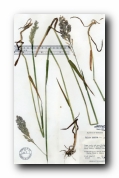
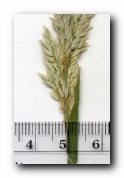
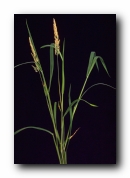
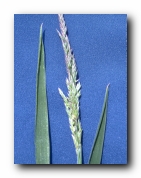
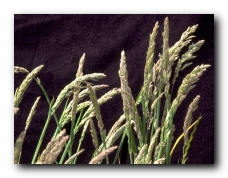
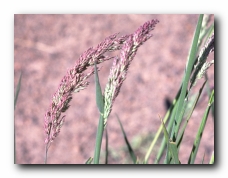
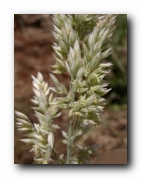
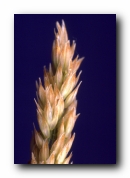
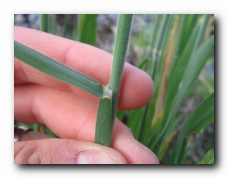
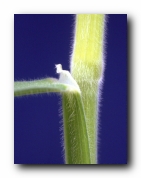
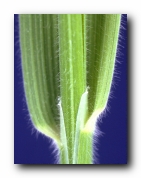
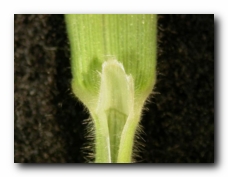
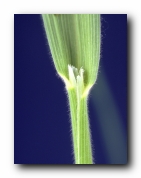
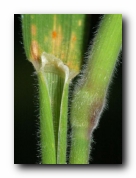
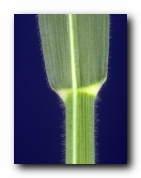
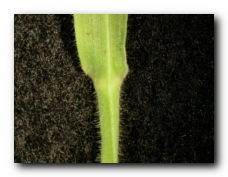
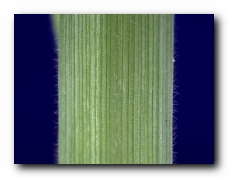
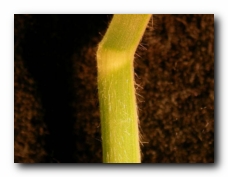
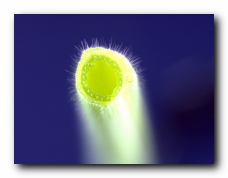
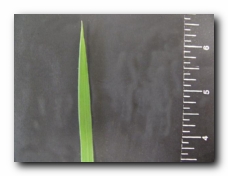
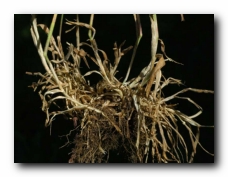
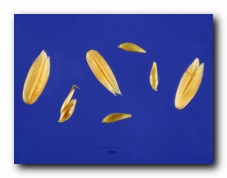
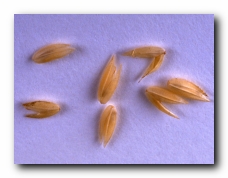
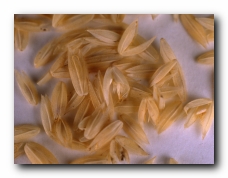
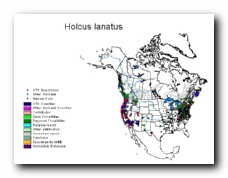
40" Rows:
Broadcast:
Loam:
Clay:
High
High
Low
Habit: Grayish, velvety-pubescent perennial with rhizomes.
Culms: Densely and softly pubescent, 30-60 cm. tall, erect.
Blades: 2.5-15 cm. long, 4-12 mm. wide, flat, velvety grayish-green.
Sheaths: Shorter or longer than the internodes, velvety grayish-green.
Ligule: 1-2 mm. long, toothed, pubescent.
Inflorescence: Densely flowered purplish terminal panicles 8-15 cm. long, often
narrow and interrupted below.
Spikelets: 4 mm. long, 2-flowered, the lower flower perfect, the upper staminate,
the pedicel disarticulating below the glumes, the rachilla curved and somewhat
elongate below the first floret, not prolonged above the second floret.
Glumes: About equal, longer than the florets, villous, hirsute on the nerves,
keeled, compressed, the first 1-nerved, acute or obtuse, the second broader
than the first, 3-nerved, acute or short-awned, thin.
Lemmas: 2 mm. long, glabrous except for the ciliate apex and shining, membranous,
at length rigid, enclosing the paleas, the first awnless, the second 2-toothed,
with a slender hooked dorsal awn, inserted just below the apex.
Palea: 2-keeled, thin, nearly as long as the lemmas.
Habitat: Meadows and waste places.
Use: Occasionally cultivated as a meadow grass but advantageously only
on sandy or sterile soils.
Synonyms: Nothoholcus lanatus (L.) Nash
Special Notes: